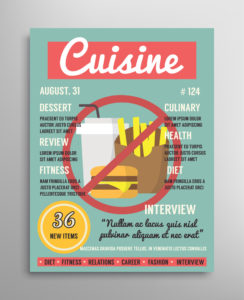When you’re pursuing your dream of authorship with plans to turn your book into a business, you will need to produce a lot of content. It can be overwhelming to think about how much you will need to create for your actual book, blog, emails, product creation, lead magnets and social media.
To reduce overwhelm and increase your productivity, you want to start with a method that can help you conduct quick research that makes the writing process super fast. Your goal is to create a pantry of ideas that you can pull from whenever you need inspiration for content.
Choose a Research Day
 One thing you may want to do is pick one day of the month or one day of the week to dedicate solely to research for content ideas. That makes the rest of your tasks much easier because every day you sit down to write a blog post or an email, you can simply pull from your readymade file and whip up the content with ease.
One thing you may want to do is pick one day of the month or one day of the week to dedicate solely to research for content ideas. That makes the rest of your tasks much easier because every day you sit down to write a blog post or an email, you can simply pull from your readymade file and whip up the content with ease.
Use a Spreadsheet or Folder
 If you love spreadsheets then you can simply use one to jot down ideas, where you found them, links to resources, etc.
If you love spreadsheets then you can simply use one to jot down ideas, where you found them, links to resources, etc.
If you aren’t a spreadsheet kind of person, then create a main file folder on your desktop and title it something like Content Research for XYZ Niche. Use a note pad or word doc and jot down the same information you would have included in the spreadsheet.
You can also create sub-folders for specific areas you are researching e.g., aromatherapy folder, essential oils folder, meditation folder, stress folder, keto folder, etc.
This way, you can easily pull up content ideas for the different topics. For example, if you want to do a blog post on how to use essential oils to reduce stress then pull up the essential oils and stress folders – everything you need should be there.
Organizing your research is a key step in keeping things simple, reducing overwhelm and writing high quality content quickly.

Use Online Resources to Generate Content Ideas and Outlines
 News sites like CNN or Fox News (or some of the smaller news sites) have daily articles posted about a variety of niches. Don’t just look at the headlines, but instead go to some of their subcategories.
News sites like CNN or Fox News (or some of the smaller news sites) have daily articles posted about a variety of niches. Don’t just look at the headlines, but instead go to some of their subcategories.
You can usually find these by scrolling down to the very bottom of the page where you’ll find links to their latest articles on topics like travel, health, parenting, tech gadgets and more.
There may be a quick list of 6 or fewer links across the top of the page, but the site map or bottom area has more detail in terms of subcategories, so you might find more relevant topics for your niche.
For example, on Fox’s website, they have a health link at the top, but at the bottom, you find specific categories for mental health, cancer, heart health, healthy living, children’s health, and more.
You can also go to any news site and use their search box to type in relevant keywords. Be sure and look for drilled down keywords. If you just type in diet on CNN’s website, you’ll find everything with that word – including articles about the diet fish are put on in a particular luxury villa.
So you want to be specific with words like keto. That way, you’re filtering out irrelevant search results for fish and instead getting something you can use. When you go to news sites, jot down a list of topics they’re writing about.
Chances are, consumers will begin conducting their own searches on the topics once they’re mentioned in the news. You can also just search on a search engine and use their News tab, like Google News.
That way, you’ll be seeing the most up-to-date topics being discussed that will help you stay on top of trends and chatter. Blogs by your competitors are another good spot to turn to for ideas for your content.
You NEVER want to plagiarize another person’s site. You’re just looking for the basic content idea. You’ll cover the topic in your own way. Don’t copy and paste and rewrite their content – just take note of the overall topic idea.
Another trick is to search images to get lots of ideas. Go to a search engine and type in your niche keyword and click on Images. Here, you’ll find all sorts of good ideas for your content.
For instance, you might type in the word vegetarian on a search engine. You might assume that all you’ll see are a bunch of pictures of fruits and vegetables, but you may also see a very fit person with a headline on the image that says building muscle on a vegetarian diet. That’s a great content idea.
Videos that are already out there can help you gain more ideas or outline concepts. Sometimes video channels will have topics that may not be making major headlines, so it’s a good idea to check them out and see what the buzz is for their audience.
If you’re in the survival and prepping niche, you might go to Google Videos or YouTube and type in the word homesteading. That could give you content ideas for homesteading on a small property, financial needs to start homesteading, starting a homestead garden and more.
Use Books for Some Solid Content Ideas
 Dummies and Idiots Guides have a wealth of content ideas inside if they’ve created one of them for your niche, or a related niche. They have one of the most detailed tables of contents you can image.
Dummies and Idiots Guides have a wealth of content ideas inside if they’ve created one of them for your niche, or a related niche. They have one of the most detailed tables of contents you can image.
In fact, they have two. The first one (called At a Glance) is broader, and the second one is a drilled down version, which is perfect for people wanting to create an outline for a lead magnet or blog series.
Specialty topic books are a good content idea generator, too. Sometimes many consumer books for a niche are broad, like anti-aging tips, for example. But you might be able to find an entire book about preventing cataracts, and this gives you more to work with.
When you find a specialty book, it helps you drill down a lot more than what a broad book would do for you. A broad book might just mention that cataracts are a sign of aging, but a book all about cataracts might cover details about prevention, symptoms, and treatment options.
You can also use money saving book sources like your library, discount bookstores, and even Kindle free or discounted reads in the non-fiction sections. Even if you go through a book and use it just for one series of blog posts or one lead magnet, you can always repurpose your content ideas down the road, so keep your resources to refer to later.
For example, you might do a simple blog series about 12 different weight loss plans. Later, you might want to dig deeper into one or more of those plans, so the resources will come in handy to provide you with faster content creation methods if you build a library of them over time.
Consumer and Trade Magazines Are Great Content Generators
 There’s a difference between trade magazines and consumer magazines. One is for the professional who is in the niche, and the other is for the consumer who is buying products in that niche.
There’s a difference between trade magazines and consumer magazines. One is for the professional who is in the niche, and the other is for the consumer who is buying products in that niche.
Trade magazines are for the professionals. For example, you might find a magazine written for fitness trainers that talks about various ways they can help their clients achieve their goals.
Consumer magazines will talk directly to the client themselves, motivating and inspiring them to go after those goals and providing tips for them to do it. Both will come in handy for you as an online marketer.
Bookstores such as Barnes and Noble will have both kinds of magazines available in a variety of niches. You won’t just find broad consumer magazines, but you’ll be able to find lots of small, specialty magazines, too.
You can also find these by typing your niche keyword and then the words trade magazine into a search engine. You can do the same for consumer magazines. Keep an eye out at the grocery store, where many consumer publications are sold, too.
If you buy the magazines, you can either keep them for future reference or tear out articles that are relevant and create a file folder of swipe ideas. That way, if you sit down and need an idea for a blog post, email or even a new book, you can reach in the folder and take one out.
You can also keep a note on it about where you’ve used the idea, too. So, if you used it on your blog, keep it until you’ve also used it in a product, on social media and in an email. Repurpose the idea itself as much as possible, because you never know where your prospective customer will find you.
You can go to Wikipedia and see a list of magazines in the United States here. They’re categorized by things like business, food and cooking, health (with subcategories for men and women), and so on
Sometimes you’ll find something that pairs nicely with your niche. So, if you were in the weight loss niche and you looked under Food and Cooking, for example, you would find a Cooking Light magazine that might have good content for you to touch on in your own online content.
Then, using that image search idea, you could type in that magazine name and get ideas for blog topics. Remember, you’re looking for inspiration only. For example, if Cooking Light has an article titled 67 Favorite Dishes, Lightened – you would take the idea for giving a favorite dish a makeover to lessen the calories.
You might look at the foods they listed, like pasta, pizza, soup, sandwiches – and then pick one of those to feature on your blog. Or do a “lighter sandwich” blog series – or a post with “5 ways to reduce the calories in your sandwich.”
Make sure you’re keeping your eyes open for related magazine topics and not just the main topic you’re pursuing online. Instead of just thinking of one idea, always look at how you might be able to turn it into a series, an info product, or something bigger than a single article.
Utilize Keyword Tools to See What Content People Need
 When it comes to keyword tools, there are both free and paid tools you can use to generate more ideas for your content and outlines. Both work – you can drill down as far as you want with either one.
When it comes to keyword tools, there are both free and paid tools you can use to generate more ideas for your content and outlines. Both work – you can drill down as far as you want with either one.
Get creative whenever you’re using keyword tools. You can use an asterisk to help fill in the blank for you. For example, you can search for best * for golfers and it will deliver the results people are searching for – best gifts for golfers, best exercises for golfers, best sunglasses for golfers, and so on.
Or, if you know you want to focus on aromatherapy, for example, but you need a good slant, and you’ve already used the typical “stress relief,” type the phrase aromatherapy for into your keyword tool and you’ll find ideas like aromatherapy for headaches, nausea, and pregnancy.
Maybe you want to review a product, but you want a slant on what it’s good for. You might type in how to lose weight using * and see how to lose weight using a treadmill, how to lose weight using apple cider vinegar, how to lose weight using macros and so on.
Turn to Tangibles Selling in Your Niche for Content Ideas
 Sometimes, what people are buying can give you a good indicator of what kinds of content you should be creating. People pay for solutions to their problems. Looking on Amazon, for example, to see what anti-aging enthusiasts are paying money for can help steer your content in the right direction.
Sometimes, what people are buying can give you a good indicator of what kinds of content you should be creating. People pay for solutions to their problems. Looking on Amazon, for example, to see what anti-aging enthusiasts are paying money for can help steer your content in the right direction.
You’ll see lots of skin rollers for the face being sold on Amazon right now. These are supposed to help tighten up the skin and smooth it out. It’s also supposed to help stimulate collagen production.
This would tell you that wrinkle prevention or minimizer content, as well as collagen production content would go over well with your audience. You might even want to write a piece of content about how to use a face roller correctly, or tips on making it more effective.
Always think in terms of people who may want the same effect or results, but who may not have had success with the roller – or not like that solution. You can write an article about 5 Ways to Tighten Skin and Reduce Wrinkles Without a Face Roller.
When you look at what’s selling in your niche to get content ideas, be sure to check out the Q&A section of each product. People will be sharing their questions, like how long does it take to get results and does it help to freeze it before using it?
The comments section of tangible products will give you good content ideas, too. For example, one person reviewing the jade face roller mentions that she combined it with a new skincare regimen.
That could give you an idea for skincare regimens that pair well with a goal (fewer wrinkles or less acne, etc.). Sometimes the titles of the reviews alone generate ideas – tired eyes, swelling under eyes, great for acne scars, etc.
Another place to look for products that are selling would be the ads placed in magazines targeted to your niche/audience.
Retailers won’t spend thousands of dollars on ad space if they aren’t making sales. If there is an ad for product, you can be rest assured people are buying it. These products can give you some great ideas for topics.
For example, if your target audience is women in their 20’s or 30’s who are into fitness and body building, then look at the ads in magazines like Oxygen. You will see a lot of ads for things like fat burners.
You can create blog posts or lead magnets on variations of this topic…
- 5 Reasons You Should Have a Fat Burner in Your Daily Supplement Regimen
- 5 Reasons Why You Should NEVER Use a Fat Burning Supplement
- The Do’s and Don’ts of Using a Fat Burning Supplement
- The Pros and Cons of Using a Fat Burner
- Myths and Facts About Fat Burners
If your target audience is women over 50, then looking in magazines like First for Women can give you some great ideas. You are likely to see ads for things like diet plans (Slim Fast, Keto, Nutri-System), various supplements like apple cider gummies, liver cleanse and metabolism boosters, anti-aging products, and hair thickening products (supplements, hair care, etc.).
These ads mean that women in this age group are interested in those topics because they are problem areas that impact their lives. Think about how you can tie these ideas into your niche.
For example, if you are in the weight loss niche you might use some of those ideas to create a lead magnet or blog post:
- Better than Meal Delivery: The Simple 7-Day Meal Plan that Will Help You Shed Pounds, Detox Your Liver, and Give You Back Your Youthful Glow.
Example for the anti-aging niche:
- 7 Ways Apple Cider Vinegar Can Help Reduce Wrinkles and Make Your Skin Glow
Wrap-Up
All of these research ideas can lead to dozens, if not hundreds or thousands of content ideas that will help you fill your blog for years, cater to your subscribers, engage people on social networking sites and educate them through your books and other information products.
If you try to conduct research on the fly, it can get overwhelming and time-consuming going through so many options to find the right one. That’s why it’s best to dedicate a set amount of time to gathering your research and ideas and then pulling from them like a pantry whenever you need them.
![]()

